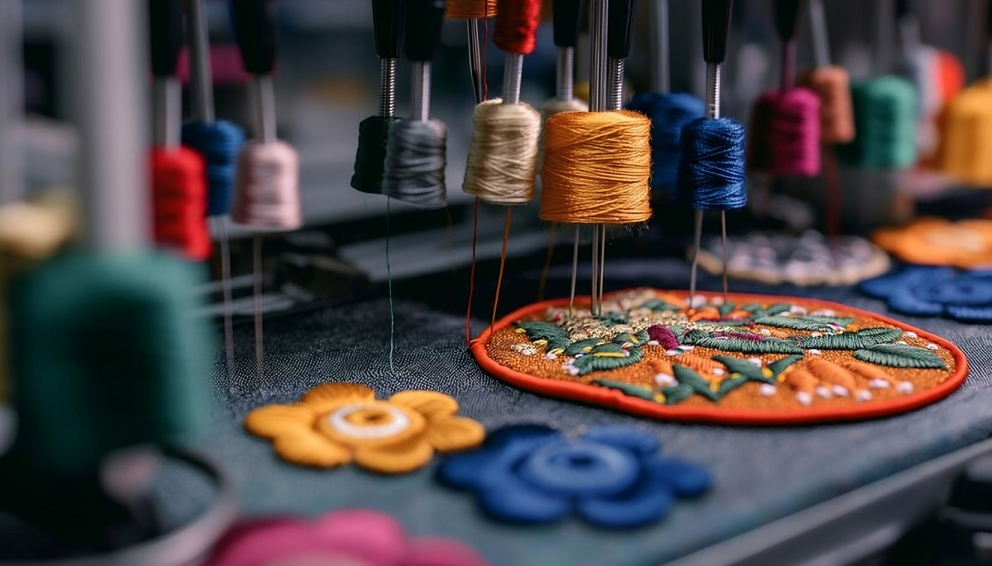In the world of textiles, where creativity and technology converge, custom embroidery digitizing is a testament to how traditional craftsmanship can evolve into a high-tech, precision-driven art form. Once dominated by hand-stitched designs, the textile industry has been revolutionized by digitizing methods that allow intricate designs to be flawlessly transferred onto fabric quickly and accurately. This article will explore how custom embroidery digitizing has shaped the textile industry, providing a blend of artistry and technological innovation that continues to grow in relevance and demand.
What is Custom Embroidery Digitizing?
Custom embroidery digitizing converts artwork, logos, or designs into a digital format that embroidery machines can interpret. This specialized technique uses software to break down an image into a series of stitch patterns, assigning thread colours, angles, and stitch types to ensure the final product replicates the original design with incredible precision.
Unlike traditional hand-embroidery methods, which are labour-intensive and time-consuming, digitizing allows for mass production without sacrificing the intricate detailing that embroidery is known for. Whether it’s a corporate logo on a uniform, personalized names on wedding gifts, or unique designs on fashion items, custom embroidery digitizing makes it possible to create high-quality, long-lasting embroidery in a fraction of the time.
The Evolution of Embroidery in the Textile Industry
Embroidery has long been a staple of textile design, with origins dating back thousands of years. Historically, embroidery was done by hand, often representing a significant investment of time and skill. Master artisans were highly sought after for their ability to stitch elaborate patterns into fabric, often for aristocratic garments, military uniforms, or religious attire.
The introduction of the first embroidery machines in the early 19th century marked a significant turning point. These machines dramatically increased production capabilities by automating parts of the stitching process. However, it wasn’t until the advent of computer-aided design (CAD) software and advanced embroidery machines in the late 20th century that digitizing truly transformed the industry. Today, embroidery digitizing is an essential part of textile manufacturing, enabling businesses to scale up their operations while still producing high-quality, detailed embroidery.
The Role of Custom Embroidery Digitizing in Modern Textile Production
Precision and Consistency
One of the most significant advantages of custom embroidery digitizing is the level of precision it offers. Traditional hand-stitched embroidery, while beautiful, can be inconsistent from one piece to another. This inconsistency is especially problematic in industries that require large-scale production, such as fashion, sportswear, or corporate uniforms. Digitizing ensures that every stitch is perfectly placed, resulting in uniformity across large batches.
This level of accuracy is precious when dealing with complex designs or detailed logos, where even a slight deviation could compromise the overall aesthetic. Through digitizing, manufacturers can be confident that their designs will be executed precisely as intended, no matter how intricate.
Speed and Efficiency
Custom embroidery digitizing has drastically increased the speed at which embroidered products can be produced. What might have taken days to hand-stitch can now be completed in hours. This speed allows companies to meet tight deadlines, handle bulk orders, and respond to market demands more effectively.
Furthermore, once a design has been digitized, it can be stored and reused indefinitely. This means that repeat orders can be processed quickly without reworking the original design, saving time and money in the long run.
Cost-Effective Production
While the initial investment in digitizing software and machinery can be significant, the long-term benefits make it a cost-effective solution for businesses of all sizes. Once a design is digitized, the cost per unit decreases dramatically compared to hand embroidery. This is especially beneficial for small businesses and custom shops that may only produce a limited number of items at a time.
Additionally, digitizing minimizes the risk of human error, reducing the amount of wasted material and time spent correcting mistakes. This efficiency level helps companies keep their production costs down, making embroidery a more accessible option for a broader range of products.
Customization and Personalization
In an era where personaliaation is becoming increasingly important to consumers, custom embroidery digitizing plays a pivotal role. The ability to quickly and accurately transfer bespoke designs onto fabric means that companies can offer personalised products without sacrificing quality.
From personalised gifts and corporate swag to custom-designed clothing and accessories, digitizing allows businesses to cater to the growing demand for unique, one-of-a-kind items. This enhances customer satisfaction and helps businesses differentiate themselves in a crowded marketplace.
Scalability for Fashion and Branding
Custom embroidery digitizing has opened up new possibilities for the fashion industry and branding. High-end fashion designers and streetwear brands are turning to embroidery to create bold, textured designs that stand out in printed garments. For branding, companies can now easily apply their logos to uniforms, promotional items, and accessories, ensuring consistent branding across various products.
In fashion, the scalability of digitized embroidery allows designers to experiment with materials and textures, pushing the boundaries of what embroidery can achieve. At the same time, businesses benefit from the ability to mass-produce embroidered items without compromising the quality of the design.
Challenges and Innovations in Custom Embroidery Digitizing
Despite its many advantages, custom embroidery digitizing has its challenges. The process requires expertise and specialized software to ensure that the digitized designs translate well onto fabric. Factors like fabric type, thread thickness, and stitch density must be carefully considered to avoid issues like puckering or thread breakage.
However, advances in machine learning and artificial intelligence are starting to make digitizing even more accessible. Some software programs can now automate parts of the digitizing process, making it easier for newcomers to create high-quality designs without needing years of experience. These innovations are helping to further integrate embroidery into the mainstream textile industry, bringing custom designs to a broader audience.
Conclusion: Shaping the Future of Textiles
Custom embroidery digitizing has undeniably transformed the textile industry. It combines traditional embroidery’s artistry with modern technology’s precision and efficiency, allowing businesses to produce high-quality, personalized products on a large scale. As consumer demand for customization and uniqueness grows, digitizing will continue to play an integral role in shaping the future of textiles.
With its ability to streamline production, reduce costs, and deliver flawless results, custom embroidery digitizing has made embroidered designs more accessible than ever before. Whether you’re a fashion brand, a corporate entity, or a small business, the possibilities for creative expression through embroidery have never been greater.




